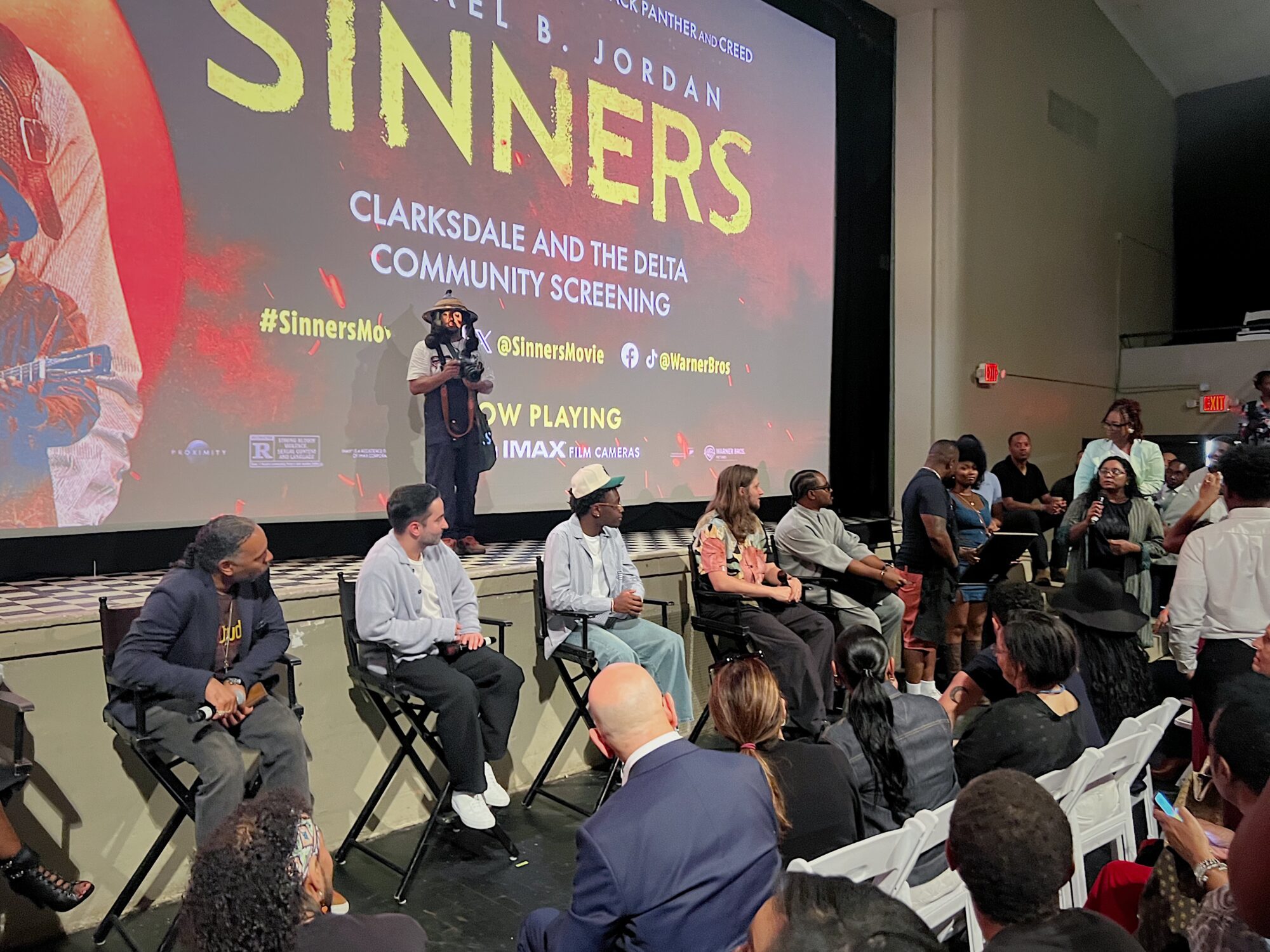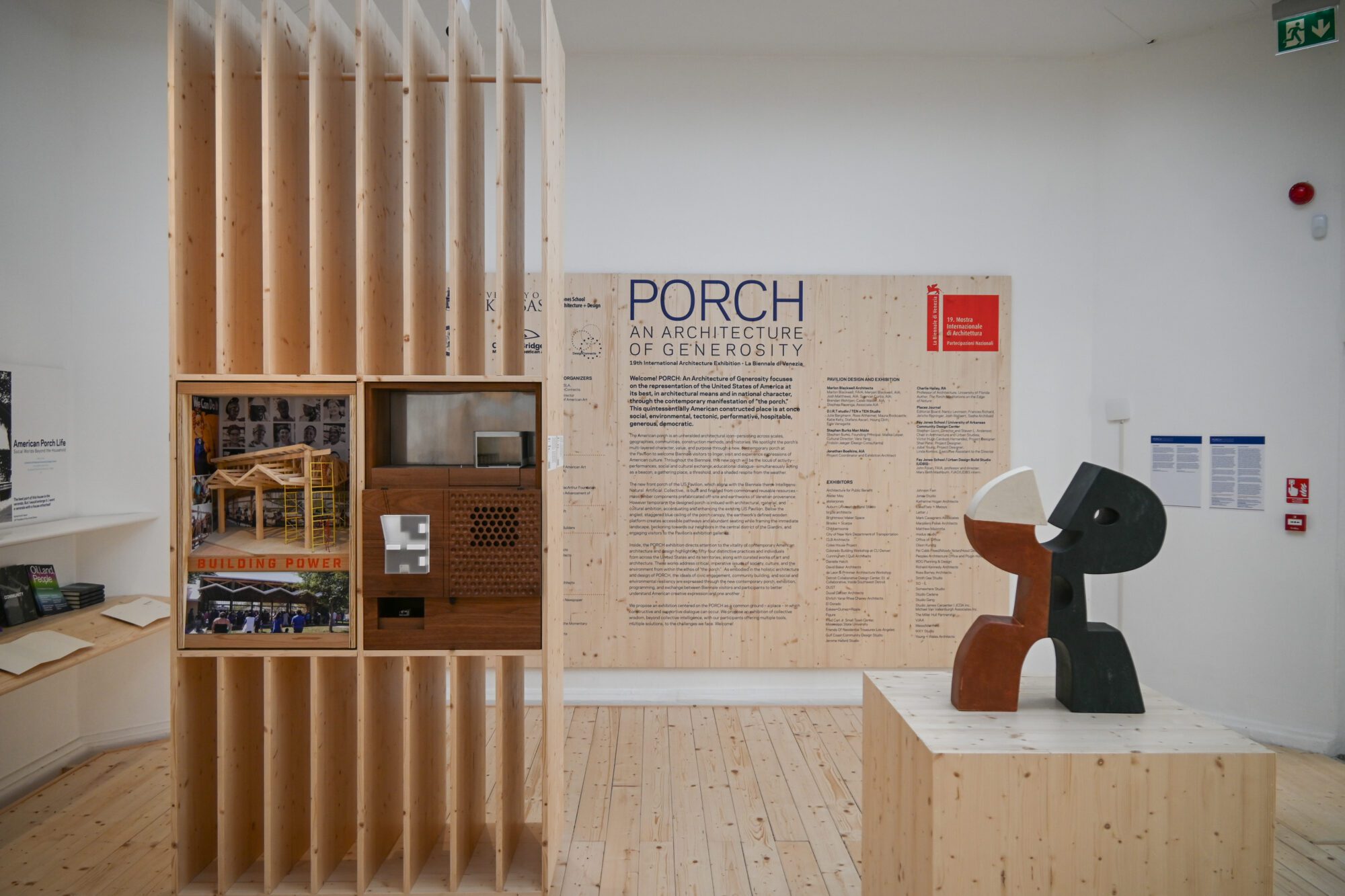
PORCH: An Architecture of Generosity featuring the Gulf Coast Community Design Center’s model on the far left.
- Among the 54 exhibitors, you’ll find three Mississippi locales at the American pavilion in the event known in the field as the “Olympics of Architecture.”
Picture the scene of a Mississippi front porch: water condensing on the sides of a tall glass filled to the brim with crystal clear ice cubes and southern sweet tea while leaning back in a rocking chair, looking up at the light blue-painted ceiling. Moments of “hi y’all”s, Independence Day celebrations, quiet evenings catching fireflies, memories of children in the front yard, or waiting for the mail activate these cherished southern spaces.
At the 2025 International Venice Architectural Biennale, “PORCH: an Architecture of Generosity” occupies the American pavilion for the event known in the field as the “Olympics of Architecture.” The Biennale is a showcase of the very best the world has to offer in the field of architecture (or art every other year) and culminates in a grand exhibition that spans two sites in Venice, Italy. It includes the activation of country-sponsored pavilions (think World’s Fair) and an overall showcase around the biennale’s theme: “Intelligens. Natural. Artificial. Collective.”
“PORCH” is the exhibition curated by the Fay Jones School of Architecture and Design at the University of Arkansas, housed in the American Pavilion. While it explores a national perspective of the idea of a “porch,” the presence of the South, and specifically Mississippi, is undeniable.
Among the 54 exhibitors, you’ll find three Mississippi locales (a large number for a single state): Duvall Decker Architects, the Fred Carl Jr. Small Town Center, and the Gulf Coast Community Design Center. The latter two are design research centers that are part of Mississippi State University. This marks a rather notable first entry for MSU, given that the two centers represent one third of all university programs featured in this year’s exhibition.
For Peter MacKeith and the curation team, they took inspiration from their previous exhibition at the 2018 Venice Biennale – “A South Forty”. They even incorporated an abandoned concept from that project – using mostly physical models.
“The first iteration [of A South Forty] was conceived of 40 physical models as ‘columns’ that each firm would build to condense their entire practice into the column,” Peter shared.
In an age where data, text and digital expressions of information dominate, PORCH aims to focus on the everyday people who might interact with the site.
“We needed to think through the lens of the school-aged child, given that many of them visit the exhibit throughout its time on display at the Biennale,” says Peter.
They encouraged exhibitors to create engaging and interactive models, some including sliding panels to create porch scenes or music boxes that crank, playing a recognizable song.
Having competed against over 400 other practices, our Mississippi representatives took three distinct approaches. For Duvall Decker, a rich and precise model highlighting their work on the Bennie C. Thompson Academic and Civil Rights Research Center at Tougaloo College explores the textures of material and the porch spaces at a variety of model scales.
“We challenged ourselves to create a 3-dimensional analytique – a drawing that was traditionally used to present all the scales and qualities of a building in one painting or watercolor,” Decker explains. “In the South, the porch is even more a part of social traditions. Our approach to the Thompson Center honors both Tougaloo’s tradition of empowering students that dates to the university’s founding and its role as a haven for the civil rights movement and a planning site. Here, the porch is both an educational device and a social place to gather.”
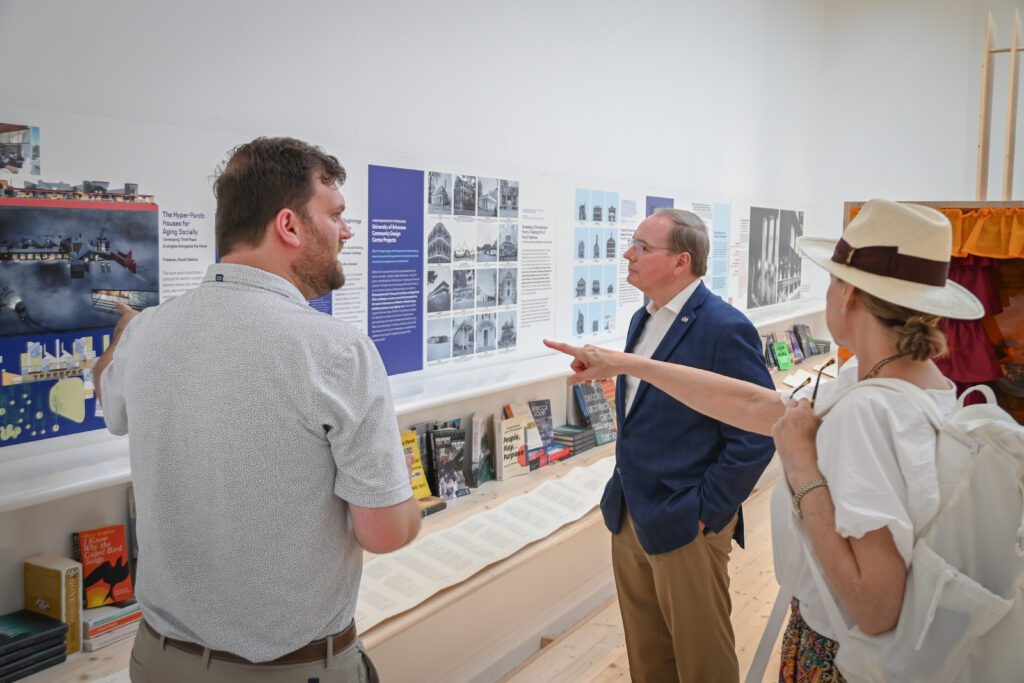
While this was Decker’s second contribution to the Architectural Biennale, this year marked the first entry for Mississippi State University. MSU President Mark Keenum and a University delegation experienced PORCH firsthand in late June.
“It’s wonderful to see Mississippi State University and the excellent work of the College of Architecture, Art and Design recognized at this international level. It makes me very proud of the quality of our programs,” Keenum shares.
Angi Elsea Bourgeois, the Dean of the College, led the delegation alongside MSU Provost Dr. David Shaw and others.
“Knowing we received this international recognition is, by itself, an incredible point of pride,” Bourgeois explains. “It is even more meaningful and momentous to see it on display among the very best that the world has to offer in architecture and design.”
The Director of the Fred Carl Jr. Small Town Center, Leah Kemp, saw the theme for the open call for PORCH and knew it was perfect for the center to apply.
“I believe the porch is a microcosm of a small town. Our long-standing history as a center has been researching and understanding the challenges of small towns and working with them to achieve great triumphs.”
Kemp went on to note why it was so appropriate, while impressive, that both MSU centers were chosen to be featured, echoing much of what Keenum noted.
“Both of our centers are people- and engagement-focused. It is important that our work and research is being recognized on an international scale. We are proud to represent Mississippi in such an extraordinary way,” Kemp shared.
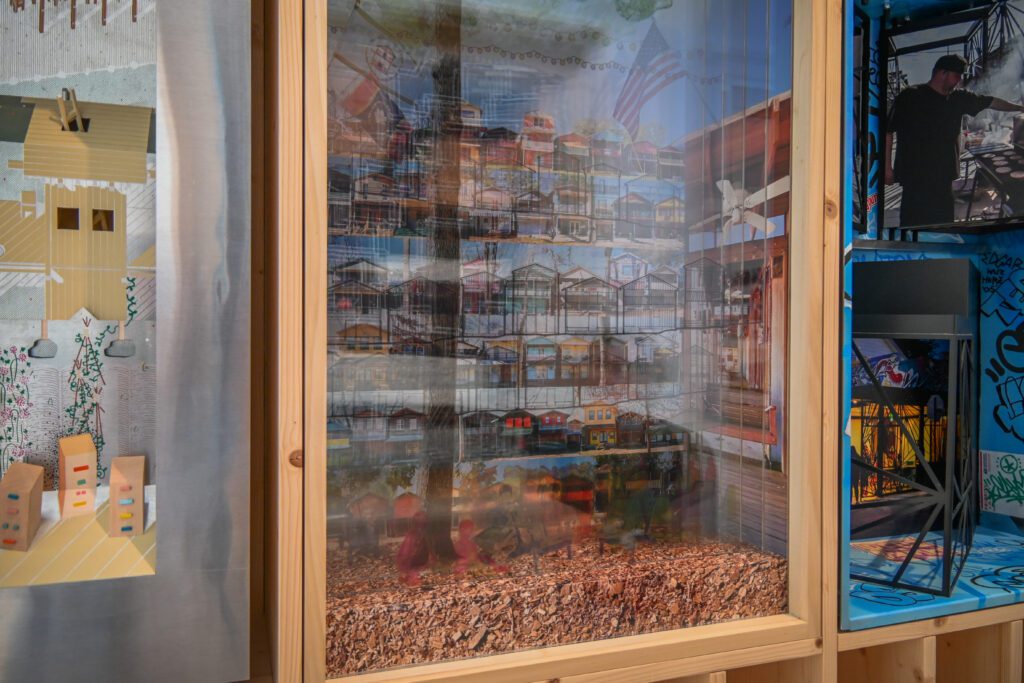
The model fabricated by the Fred Carl Jr. Small Town Center highlights the beloved front porches of the Neshoba County Fair, an icon of Mississippi’s community-centered culture.
For the Gulf Coast Community Design Center, their submission focused on a partnership with the organization, Women in Construction, and the dignity and power that the porch provides.
“Even in a neighborhood, people sit on their porch with a position of power, expressing, ‘This is my street. This is who I am.’ We captured this in our model through showcasing the women in this program,” says David Perkes, the Director of the Center.
The pavilion he describes is one of many projects done with Women in Construction and focuses on providing opportunities for women to be trained in construction-related careers charting better financial paths for their families and their futures.
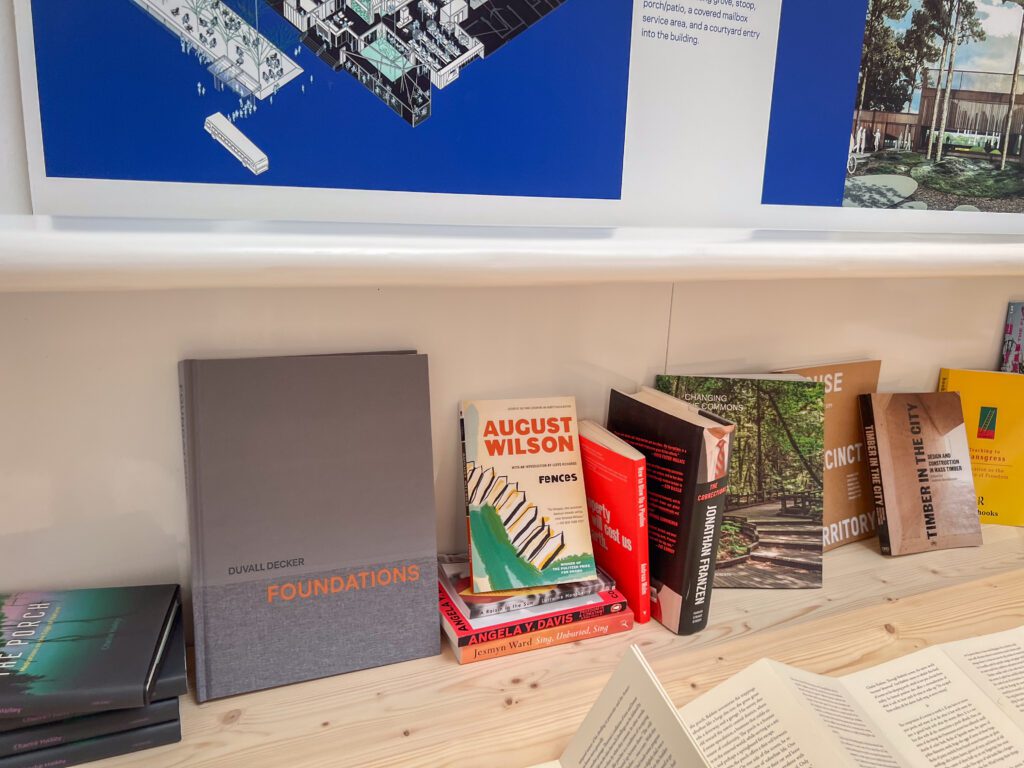
Beyond the exhibitors and their models, PORCH incorporates a rich expression of researched context to the variety of “porches” over time, their role in shaping our society, and the ways they are being utilized to address contemporary issues, such as isolation in aging populations. Through this contextual narrative, we find a familiar Mississippi vernacular: the dog trot house.
Additionally, there is a PORCH library with roughly 100 titles of books influential to the curatorial team and placed on a long, low shelf that spans the length of the exhibit. Within that collection of design and urban studies literature, you’ll also find a significant portion of Mississippi authors represented – no surprise to all of us. Eudora Welty, Richard Ford, William Faulkner, Richard Wright, Angie Thomas, Jesmyn Ward, Boyce Upholt, Alice Walker, and Duvall Decker all have a title or two in the PORCH Library, furthering the Mississippi influence on the nation’s understanding of porches.
While Mississippi’s role in the idea of the “porch” is probably much larger than expressed in the exhibition, it is wonderful to see such a display as exists with the American Pavilion this year. Without Welty, Faulkner, or Ward – without the “dog trot” – without the work of the Small Town Center or the Gulf Coast Community Design Center, the American understanding of this vital piece of our social ecosystem would be remarkably different.

